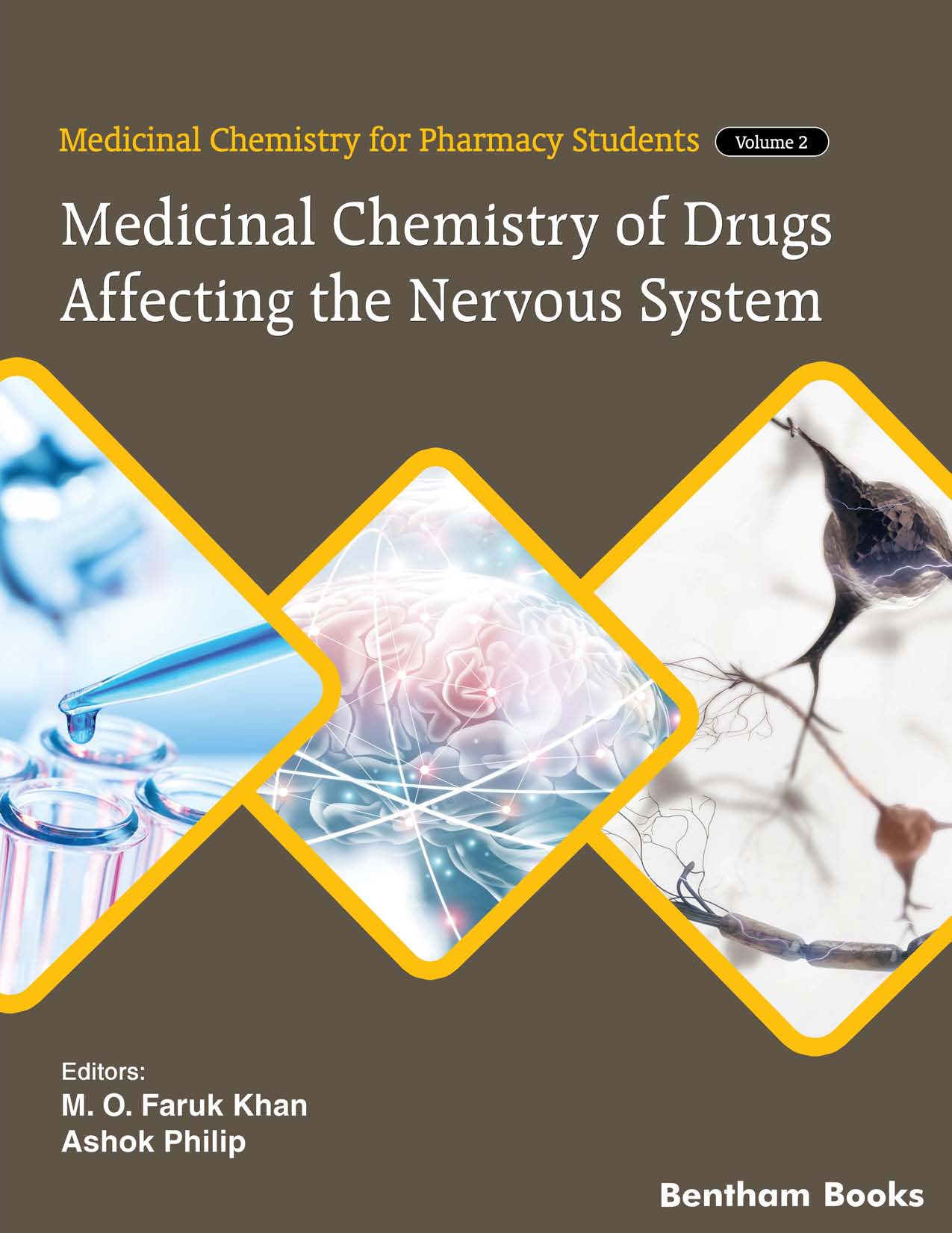This is the second volume of the book series, “Medicinal Chemistry for Pharmacy Students”. The primary objective of this e-Book series is to educate PharmD students in the area of medicinal chemistry and serve as a reference guide to pharmacists on aspects of chemical basis of drug action. A thorough discussion of key physicochemical parameters of therapeutic agents and how they affect the biochemical, pharmacological, pharmacokinetic processes and clinical use of these agents is the primary focus of the whole book. The rationale for putting together an e-Book of this nature is to equip PharmD students with the scientific basis to competently evaluate, recommend and counsel patients and health care professionals regarding the safe, appropriate, and cost-effective use of medications.
This second volume of the series is comprised of 8 chapters focusing on a comprehensive account of medicinal chemistry of drugs affecting autonomic and central nervous system. It provides the mechanism of drug action, details structure-activity relationships and metabolism as well as clinical significance of drugs affecting the autonomic and central nervous system to give the knowledge base for pharmacist.
Chapter 1 provides a comprehensive account of the medicinal chemistry of “drugs affecting the cholinergic system”. This chapter includes s pathophysiologic principles, mechanism of action, structure -activity relationships and metabolism of drugs affecting cholinergic system including cholinergic agonists, antagonists neuromuscular blocking agents and related drugs.
Chapter 2 is a comprehensive account of medicinal chemistry of “drugs affecting the adrenergic system”. It details the pathophysiologic principles, mechanism of drug action, structure-activity relationships and metabolism of the adrenergic and related drugs with their clinical significance. This chapter provides a thorough discussion of direct and indirect acting sympathomimetic (adrenergic agonists) and sympatholytic (adrenergic antagonists) drugs.
Chapter 3 focuses on the medicinal chemistry of “phenothiazines and related antipsychotic drugs”. This chapter is a comprehensive account of medicinal chemistry of the antipsychotic drugs. It discusses the pathophysiologic principles of schizophrenia and other psychotic disorders and receptor pharmacology, mechanism of action and structure-activity relationships of the first- and second-generation antipsychotics and related drugs. This chapter also delineates the clinical significance of all classes of antipsychotic drugs, their therapeutic indications, side effects and metabolic pathways of selected first- and second-generation antipsychotic agents.
Chapter 4 is a comprehensive account of medicinal chemistry of the “antidepressant drugs” – their pathophysiologic principles, mechanism of action, structure-activity relationships and metabolism. Topics include biogenic amine hypothesis, the roles of dopamine, serotonin and norepinephrine in depression.
Chapter 5 concisely explains the chemical and pharmacological basis of traditional/conventional and newer sedative-hypnotics and anxiolytics that include barbiturates, benzodiazepines and non-benzodiazepine agents. Topics discussed include chemical and pharmacological classes, mechanisms of action, Structure-activity relationships, and key pharmacokinetic (ADMET) characteristics of individual drug molecules.
Chapter 6 is a comprehensive account of the medicinal chemistry of antiepileptic drugs. It discusses the physicochemical principles, mechanism of action, structure-activity relationships and metabolism of the antiepileptic and related drugs, such as barbiturates, hydantoins, oxazolidinediones, succinimides, amides, benzodiazepines, valproic acid and its derivatives, GABA-analogs, and miscellaneous compounds, and their clinical relevance.
Chapter 7 is a comprehensive account of the medicinal chemistry of general and local anesthetic agents. It provides the physicochemical principles, mechanism of drug action, structure-activity relationships, and drug metabolism to build a strong knowledge base for pharmacy students.
Chapter 8 provides a comprehensive account of Parkinson’s disease and the medicinal chemistry of antiparkinsonian drugs. It details the mechanism of disease progression, drug action and structure- activity relationships of antiparkinsonian drugs.
The chapters in this volume are designed to guide the reader to review, integrate and apply principles of medicinal chemistry to drug action of therapeutic agents. All concepts are illustrated with diagrams or figures, with the keywords highlighted, bulleted or numbered. Wherever needed, special boxes and case studies are included. In addition, each chapter is reinforced with student’s self-study guides and self-assessment questions. Special notations are highlighted using call-out boxes for visual effect. Tables and figures are used to augment the text as needed.
We would like to express our sincere gratitude to the contributing authors for their time and effort in completing this volume. We would also like to thank the Bentham Science Publishers, particularly Ms. Fariya Zulfiqar (Manager Publications) and Mr. Mahmood Alam (Director Publications) for their support. We are confident that this volume of the book series will guide students and educators of pharmacy and related health professions worldwide.
M. O. Faruk Khan, Ph.D.
University of Charleston School of Pharmacy,
Charleston, WV,
USA
&
Ashok Philip, Ph.D.
Union University College of Pharmacy,
Jackson, TN,
USA

